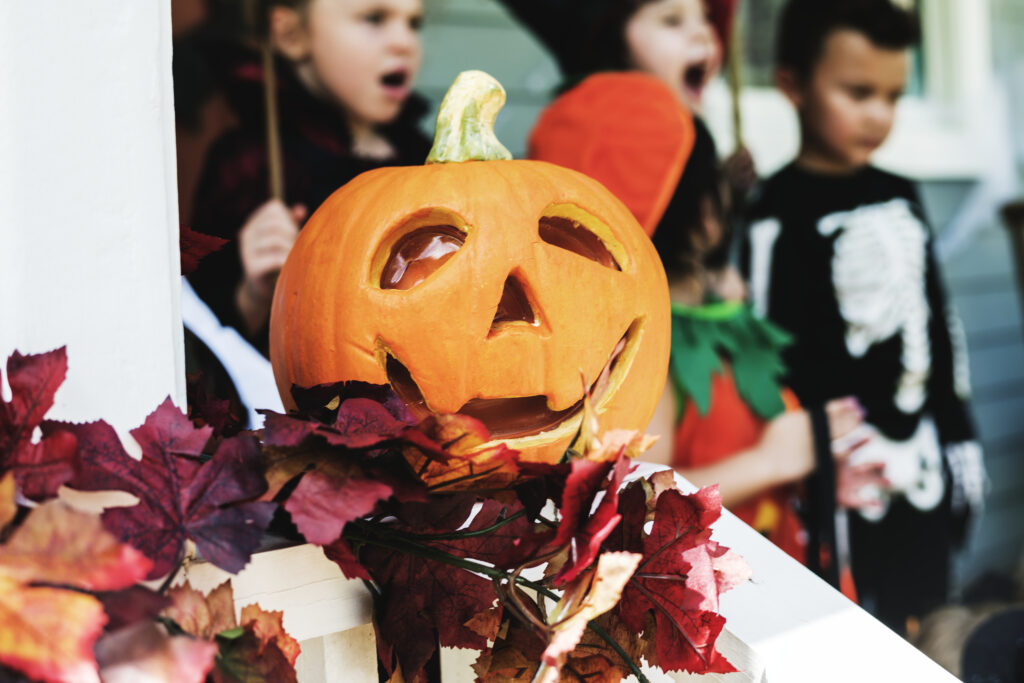Nothing is scarier than Halloween décor that harms our planet. But spooky can be eco-friendly with a few simple swaps.
Between the classic horror flicks and creaking floorboards of the Halloween season, what remains the most bone-chilling fright of all? The environmental impact of some of our favorite holiday traditions. From the one-time-use costumes to outdoor décor that poses dangers to wildlife, Halloween can be a night of terrors indeed. Fortunately, a few simple changes can make Halloween Hallogreen:
Organize a community costume swap
Most of us buy costumes for one night only. With the average Halloween costume ranging from $20 to $70, buying a new costume every year is a hefty investment only for it to be thrown away. And throwing away Halloween costumes contributes to environmental waste. An estimated thirty-five million costumes get tossed each year in the U.S.
Give your old costumes new life in the hands of another trick-or-treater. Organize a costume swap in your community. You can also invite people who can’t attend to donate costumes to the swap so there’s plenty of selection.

Use your pumpkin from stem to seeds
When hunting for your perfect pumpkin (and other festive gourds), consider your local farmer’s market. By buying locally, consumers help reduce emissions from long-distance transportation, and you’re supporting a neighbor.
Once the carving starts, harvest your pumpkin’s seeds first. Pumpkin seeds are delicious when roasted and seasoned. Dried and unseasoned, they’re a treat for birds and other wildlife. Or plant the seeds to grow your own pumpkins for next year’s Halloween!
Those fake spiderwebs are popular. And dangerous. Birds, foxes, insects, and other critters can get tangled in the fake webbing. If webs are a must for you, use them indoors.
About 1.3 billion pounds of pumpkins are thrown away each year. So, when Halloween is over, dispose of your pumpkin sustainably. If it’s beginning to rot, add it to your at-home compost. If it’s still in good shape, cut it up to share. Birds, squirrels, deer, and other small animals will thank you for the seasonal treat.
Decorate sustainably
Fake spiderwebs are popular, but dangerous. Birds, foxes, insects, and other critters can get tangled in the fake webbing. If webs are a must for you, use them indoors.
You can still achieve a spooky exterior (and save money) by using natural materials. Make webs from grass or sticks. Tie fallen sticks or branches together with twine for a DIY skeleton. Or hang paper bats made of construction paper.
If doing-it-yourself isn’t your thing, invest in high-quality decor that can be reused. Websites like Etsy can help you purchase sustainable decorations and accessories, while also supporting small businesses.

Other ideas for Hallogreen:
- Buy candy for trick-and-treaters in bulk to reduce waste from packaging.
- Look for candy and chocolate with third-party certifications: Fair Trade, Rainforest Alliance certified, Certified Organic.
- Consider non-candy options, such as pencils or erasers. Or create a “treasure chest” with gently used books, games, or toys.
- Send your trick-or-treaters out with a reusable bag. (A pillowcase works great.)



Great ideas! Love spooky season 🎃💕
Thanks for the tips 😉 🩷👻
What a great read, I love these ideas! 🎃 🤍